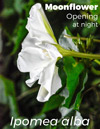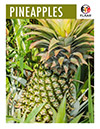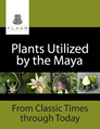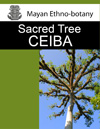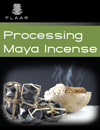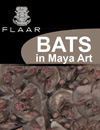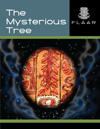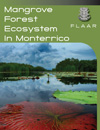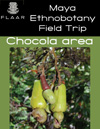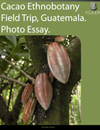The principal stones and minerals that the Classic Maya utilized were chert (“flint”), jadeite, obsidian, iron pyrite, cinnabar, hematite, and other materials that were showy (for burial or ceremonies) or useful, such as granite for manos and metates. You can obtain a more complete list in any monograph on the artifacts of Uaxactun, artifacts of Tikal, etc.
Hematite, cinnabar and other minerals were used for colors. The Maya also used clays and botanical products for dyes. Charcoal was one of several sources for the color black. FLAAR is doing separate projects on colorants, especially for body painting (in which the Maya excelled).
Dyes were used for cosmetic purposes both for men and women. Cosmetic dyes also come from clays and plants. Colorants with sacred connotations, such as cinnabar and hematite, were used in elite burials.
The long range FLAAR projects intends to
-
Photograph all pertinent minerals in their natural habitat.
-
Photograph all minerals in our professional photography studio to show their color, variation, and form.
-
As time becomes available, photograph pertinent artifacts that are made of these minerals.
Obsidian (volcanic glass) is the most common mineral utilized by the Classic Maya, and one source of obsidian can easily be seen by any visitor to Guatemala at Km 25 on the Carretera al Atlantico. The actual source of El Chayal is up on top of the hill; we show the obsidian visible from the road cut.
Green obsidian comes from Pachuca, far away in Mexico. When I visited those mines over a decade ago I was impressed how extensive they were. But I recently spoke with a person in Guatemala knowledgeable about local minerals and she said that a small amount of green obsidian was available in Guatemala naturally.
Comments by archaeologist Dr Phil Wanyerka, Cleveland State University.
Dr Wanyerka, in addition to being a leading epigrapher of Mayan hieroglyphic writing, also has general archaeological field experience, especially in Belize. Here are his comments on archaeo-mineralogy.
As for your list of resources, it is very important to keep in mind that
alabaster, while used by various cultures in Mesoamerica, has traditionally been
confused by archaeologists with travertine (cave flow stones: stalagmites and
stalagtites). Recent geologic work by several noted geologists has revealed that
most of the stone artifacts thought to be alabaster (including many of the Uula
Vases from Honduras) are in fact made of travertine. So you may wish to keep that in mind.
Also, chert and flint or two different geologic minerals. For the most part the
so-called "chert" of Belize is in fact chemically "chert" whereas some of the
"chert" in SE Guatemala is in fact "flint" a different geologic composition. So
again, be careful and when in doubt grab yourself a good geologic handbook.
I would add a few more minerals to your list: in particular I would add granite
(fine and course grained) used for manos and metates and traded all around
Mesoamerica for this material only comes from volcanic areas (like Maya Mountains of Belize and Highlands of Guatemala).
Others I would add are basalt (and other volcaniclastic rocks all used for
grinding stones) , quartz, travertine, magnatite (used for black pigments),
limonite (used for yellow pigments), greenstones (like serpentine), high-quality
clays (common in specialized cave deposits used for high-quality ceramics), black
obsidian.
I should say that most of these materials are simply found as float (materials
found in and around streams and rivers that have been moved by the movement of
water from their original sources either underground or from surrounding matrix).
Minerals like pyrite and hematite are also found in a a matrix that usually has to
be separated from the true mineral itself to be seen. In Belize, I have streams
full of pyrite that make them look like shimmering rivers of gold! Pretty wild!
Good luck photographing these resources in the field. Some will be hard to locate
without a good geologist. Other stones need to be split to be seen. Also some of
the sources have not be located, but you may wish to contact Juan Pedro Laporte
while In Guatemala for he has found several archaeological sites where they seem
to be working particular minerals in workshops and I think he has found their
sources, but you would have to check with him. I know we have found the sources of
many of these minerals in Belize, but again it will be vital to have a good
geologist since initially, many of the minerals do not look like what we best know
them to look like in the field.
Minerals and clays from caves.
Caves are featured in the Book of the Popol Vuh. Cave entrances are sacred icons from pre-Maya Olmec times onward. Cave entrance icons are common in Classic Maya art: many are pictured in my book on Monster und Menschen in der Maya Kunst.
But in addition to mythology and iconography of caves in the Mayan world, there are a lot of minerals and clays that the Maya would have mined in caves.
Most recently updated January 28, 2009.
First posted April 25, 2006. Updated July 2006, January 5, 2009.



